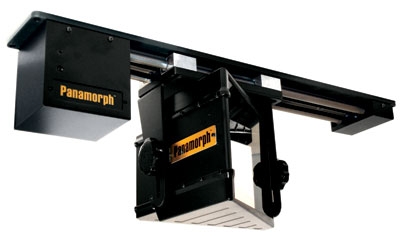Doing Widescreen Right Page 2

Many manufacturers - beginning with companies like Stewart, Draper, and VuTech - offer 2.35:1 screens, but one of the coolest innovations in screen technology comes from SMX. Its acoustically transparent CH (for "constant height") Promask screens have a velvet border so deep that you can lose your remote in it. The purpose of the border is to prevent sound resonating from the screen frame. (For more on choosing a front-projection screen, see "The Bigger Picture," June.)
Keeping Your Resolution The technology behind constant-height display systems isn't hard to understand, mainly because there are only a few things you need to consider. Let's start with the video format. Most HD DVDs and Blu-ray Discs are released in 2.35:1 or 2.40:1, which means that about a third of your display's resolution is being used to create the letter-boxing black bars on the top and bottom of the screen. The goal of a constant-height display system is to remove those bars so you can use your projector's full resolution on the image itself. Remember that if you're losing a third of your projector's resolution to black bars, you're losing a third of its brightness as well.
It takes two separate techniques working together to reclaim that missing resolution. First, a video scaler/processor digitally stretches the image vertically, to eliminate the bars. (While companies such as Anthem and DVDO offer standalone processors, projectors like the new InFocus IN82 have a built-in video scaler that can process the image correctly for display in a 2.35:1 setup.)
Stretching the image does recover the resolution and brightness - but now, of course, the movie is in "SkinnyScope," making everyone look anorexic. The second technique compensates for this by placing a lens in front of the projector lens to expand the image horizontally. There's only one problem with this - and it's literally a small one. The pixels, which were originally simple little squares, have now been stretched horizontally into rectangles. But if you're watching the screen from the correct distance instead of staring at it with a magnifying glass from 5 inches away, you won't notice this. What you will notice is a picture that's 30% brighter and just over 30% wider than the letterboxed image.
But what do you do when you want to go back to watching something, like HDTV, that has a 16:9 (1.78:1) ratio? You could climb back up a ladder and remove or add the extra lens every time you switch between formats. Or you could leave that lens installed and let the video processor scale the 16:9 image horizontally to compensate for the lens attachment. You'll lose some horizontal resolution, but if you watch more movies than TV, this could be a great solution. The best option, though, is to use a motorized sled (such as Panamorph's M380 transport) to move the lens out of the way. It's then just a matter of setting the scaler back to its 16:9 display setting.
Constant Adjustments There are still problems with constant-height projection systems. The biggest one concerns onscreen menus and interactive features. When Blu-ray and HD DVD were conceived, little thought was given to what would happen to images if they were shown at a constant height on a 2.35:1 screen. The result: On many high-def discs, the interactive menus pop up in the black-bar area eliminated by the scaler, making them inaccessible. Also, the main menus are typically 16:9 even when the movie is 2.35:1. (If you have a control system and a motorized sled for your lens, this isn't a problem for you, just an inconvenience.)
The other major issue is control. If you're on a limited budget, you'll have to deal with flipping a few switches to get your screen to mask properly and using an extra remote for the lens sled. (Fully automatic 2.35:1 projector/scaler/masking-screen systems are still pricey.)
Given that constant-height projection systems are cumbersome, quirky, and often pretty expensive, it's surprising that they generate as much interest as they do. But with every passing year, they become more affordable and easier to use, helping more and more home theaters to rival the greatest movie palaces.




























































